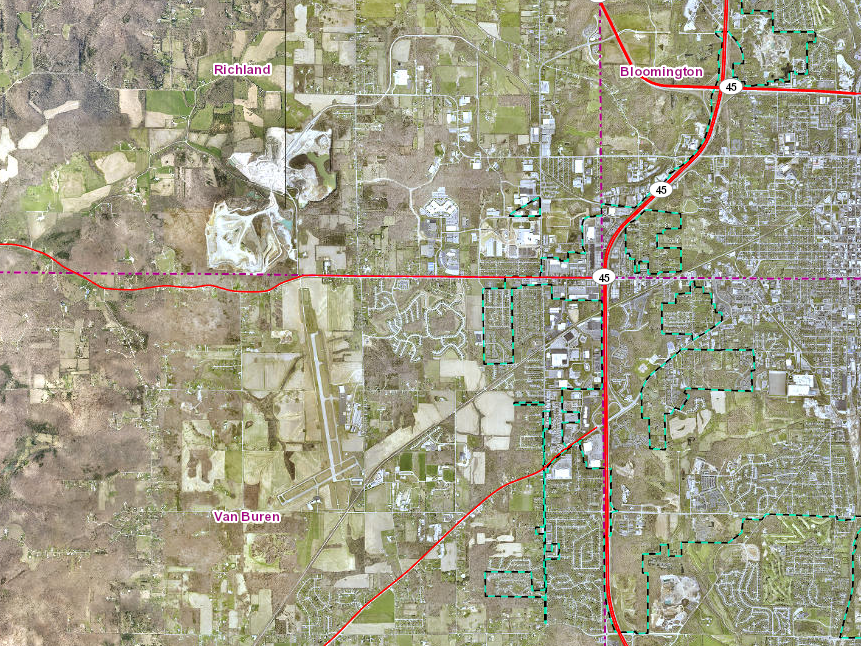The ongoing dispute over the proposed annexation of parts of Monroe County into the city of Bloomington has become a significant political and legal battleground in Indiana. The state’s decision to block the annexation has sparked debates about governance, local autonomy, and the future development of the region.
Background: The Proposed Annexation
In 2017, Bloomington’s city government, under the leadership of Mayor John Hamilton, proposed an ambitious plan to annex nearly 10,000 acres of land from unincorporated areas of Monroe County. The annexation was intended to bring these areas into the city’s jurisdiction, allowing for expanded city services, improved infrastructure, and more cohesive urban planning.
Proponents of the annexation argued that it would lead to more efficient delivery of services such as police and fire protection, waste management, and public transportation. They also highlighted the potential for increased tax revenue, which could fund further improvements in the city’s infrastructure and public services.
However, the proposal was met with significant resistance from residents of the affected areas and Monroe County officials. Opponents argued that the annexation would lead to higher property taxes without a corresponding improvement in services. There were also concerns about the loss of local control and the impact on rural communities that have historically operated independently of Bloomington’s urban center.
The State’s Intervention
The controversy reached a new level in 2021 when the Indiana General Assembly passed a law that effectively blocked the annexation. The law, which was widely seen as targeting Bloomington’s proposal specifically, allowed residents of the affected areas to remonstrate against the annexation, a move that ultimately led to the state’s intervention.
The law was met with outrage from Bloomington officials, who argued that it undermined local governance and set a dangerous precedent for state interference in municipal affairs. Mayor Hamilton described the law as “a blatant overreach” and vowed to challenge it in court.
In 2022, a Monroe County judge ruled in favor of the state, upholding the law and preventing the annexation from moving forward. The ruling was a significant blow to Bloomington’s expansion plans and has left the city’s leadership grappling with the implications of the decision.
New Judicial Ruling: A Partial Victory for Bloomington
In a recent twist, a new judicial ruling in mid-2024 has brought fresh hope to Bloomington’s efforts to annex parts of Monroe County. The Indiana Court of Appeals issued a mixed ruling that partially overturned the 2022 decision, allowing the annexation to proceed in some, but not all, of the proposed areas.
The Court of Appeals found that the state law blocking the annexation was too broad in its application, violating constitutional protections for municipal self-governance. The court ruled that while some of the contested areas could be excluded from annexation due to valid remonstration by residents, other areas should be allowed to join Bloomington, as they met all legal criteria for annexation.
This ruling has been hailed as a partial victory for Bloomington, providing a path forward for the city’s expansion plans. Mayor Hamilton expressed cautious optimism, stating that the ruling “acknowledges the city’s right to grow and serve its residents effectively.” He also noted that the city would carefully review the court’s decision and consider its next steps.
However, the ruling did not come without complications. The court also recognized the validity of some residents’ concerns and imposed conditions on the annexation process, requiring Bloomington to address specific issues related to service delivery and infrastructure development in the newly annexed areas. The city must now navigate these legal and logistical hurdles to implement the court’s decision.
Implications and Ongoing Debates
The state’s block on the annexation, and the recent judicial ruling, have far-reaching implications for both Bloomington and Monroe County. For Bloomington, the decision offers a potential path forward, though the city must now manage the complexities of partial annexation and the accompanying legal and logistical challenges. The ruling also limits the city’s ability to grow as expansively as initially planned, which could hinder long-term development efforts.
For Monroe County, the judicial decision is a double-edged sword. While it prevents the wholesale annexation of vast rural areas, the court’s ruling still allows for the city’s growth into certain parts of the county. This outcome has left some residents feeling that their concerns were only partially addressed, and tensions between urban and rural communities remain high.
The broader debate about state versus local control continues to resonate throughout Indiana. The recent judicial ruling may set a precedent for future cases involving municipal annexation and state intervention, influencing how similar disputes are handled across the state.
What’s Next?
As of 2024, the situation remains unresolved, with both sides exploring their options for moving forward. Bloomington officials have not ruled out further legal challenges, and there is speculation that the issue could ultimately be decided by the Indiana Supreme Court.
In the meantime, the controversy continues to stir emotions on both sides, reflecting deep-seated tensions over the balance of power between local and state governments, urban and rural communities, and the future direction of growth and development in Monroe County.


